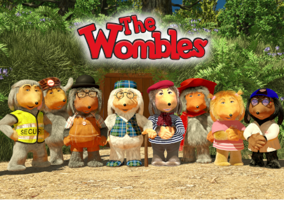With more and more charities being named in Wills each year, no charity is too small to have a legacy strategy in place. But where do you start?
Here at HEART UK – the only charity in the UK dedicated to supporting people to avoid heart attacks and strokes caused by high cholesterol – we’re by no means the smallest charity appealing for legacies. (Our turnover is just over £1m.) But we don’t have sizeable resources in terms of staff or volunteers or operating budgets. Legacies are hugely important to us and, last year, we set out to put in place a strategy to support that. So, here are my tips for a legacy strategy for charities with limited resources.
Do your research
The first thing I did was to review current lifestyles and trends and reflect on the changing population. It’s predicted that over 20% of the UK population will be over 65 by the time we reach 2025 compared to just over 15% in 2015. People are living longer. There are more choices and pressures on how to spend our money, like helping children with their first deposit, an increase in separated/extended families and more people taking out equity release to secure their future. All this means there is more competition for the ‘legacy’ pot. It’s important to do some background to understand the challenges; it’s also really interesting!
Make it simple
Of course, you can’t leave a legacy to a charity if you don’t have a valid will; it’s the only way to ensure that your wishes are carried out when you die. This is a really key message to get across to your supporters.
At HEART UK we offer a Will writing service to encourage supporters to take that step. There are key times when people typically make a Will – marriage, children, divorce, retirement – these can be reflected in your legacy communications; and don’t forget to mention the tax benefits of leaving a gift in your will to charity.
Be proud
Case studies of people who have pledged to leave your charity a legacy are so important – place stories and photographs on your legacy page and share. Stories about why people want to leave a legacy are so impactful and help so much with marketing legacy giving. Have a look at Yvonne’s case study on our website. Not only is it a good story, it demonstrates the love Yvonne has for the charity, and the comfort she gets from knowing her legacy will help to continue the good work we do.
Know your long term vision
It’s vital to ensure you have a long term vision. Before anyone considers leaving your charity a legacy, people will want to know and be confident that your charity will be around for the future, for their children and even their grandchildren. You need to demonstrate impact – what a legacy can do for your charity. And you need to ensure this is clearly communicated on your website and other fundraising channels with a strong call to action.
In my experience, ‘drip feeding’ the message is really important, highlighting legacies in every monthly e-newsletter, in social media posts, email sign offs and more. Consistency is key.
Embed legacies across your charity communications
At HEART UK, our Communications Department is a team of one! But it’s vital that the comms strategy supports our fundraising, particularly in this digital age where social media has so much impact. Decide your target market, tailor your messaging and if budgets allow, put some spend behind some of your posts. Develop a few options, test and see what performs the best.
Do approach your Trustees and Ambassadors and get them involved – challenge them – what are they doing to promote legacy giving? How can they help?
As a member of Remember A Charity, we do a key push on legacy giving during Remember A Charity Week each September.
Having limited resource, this campaign and its collateral really helps us to get that important legacy message across. Last year, we mailed out a simple leaflet about legacy giving to our supporters just before the week, aiming to capitalise on all the media interest it creates. This included a tear-off response to help us monitor those that pledged, which worked really well. This year, we have a full programme of social media lined up, starting with a blog on legacy giving from our CEO, Jules Payne, and legacies will be the lead feature in our September e-news sent to over 15,000 supporters. Letters are going out to all our trustees and ambassadors enclosing bookmarks and legacy leaflets. We are really excited about the campaign and love the inclusion of The Wombles; it’s fun with some simple yet impactful messaging and are confident it will be well received on social channels and shared.
Relationships, relationships, relationships
Ultimately, relationship building is the most important element of legacy giving. Keep your donors and supporters informed about your work, continue to build trust, demonstrate the role that your organisation plays in society and the impact of legacies within that.
On a final note, sometimes we’re not aware an individual has left us a legacy until we’re notified after their death. But we do know for certain that, along the way, HEART UK has touched their life in some incredible, meaningful way. Any supporter could choose to have their legacy live on by leaving a gift in their Will, so make sure everyone – internally and externally - knows just how important legacies are in enabling the charity to achieve its mission and how to make it happen.
Charlotte Hoare is fundraising manager at HEART UK
Related articles











